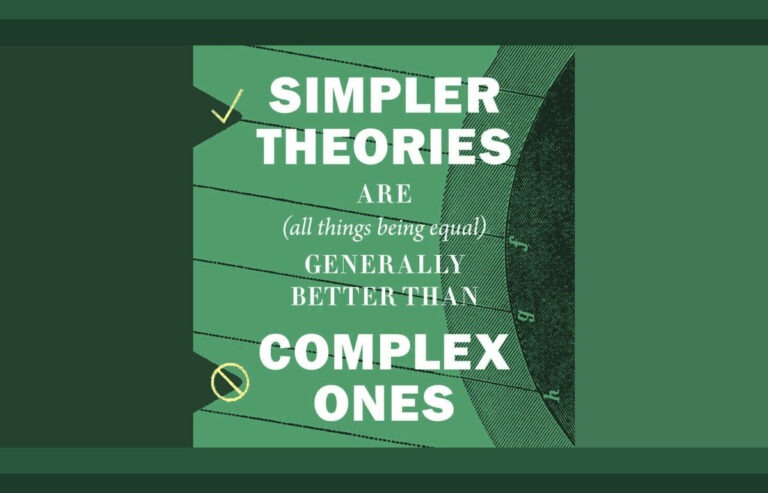Series: TST Framework > Five Thought Tools > Four Mind Traps > Three Truth Hammers
Idea Evaluation: One of Five Thought Tools.
Abstract: This article delves into the critical practice of Idea Evaluation, a cornerstone of intellectual growth and effective decision-making. Through established techniques such as the Socratic Method, Occam’s Razor, debate, comparative analysis, and peer review, individuals can rigorously assess the validity and quality of ideas. By systematically evaluating thoughts and ideas, we can distinguish well-supported arguments from weak or misleading ones, leading to deeper truths and more informed judgments. This comprehensive framework provides the tools necessary for refining thinking, engaging in constructive discourse, and navigating the complexities of information in our quest to become master thinkers.
Uncover Deeper Truths through Reflective Inquiry.
In our quest to become master thinkers, we encounter various tools designed to enhance our intellectual abilities. Among the Five Thought Tools, Idea Evaluation equips you with the means to rigorously examine thoughts and ideas. This crucial tool enables individuals to assess the validity and quality of ideas—whether they are our own or someone else’s.
Since part of my work focuses on my Idea of Ideas, I chose to call this review process Idea Evaluation, but I also sometimes refer to it as Reflective Inquiry, especially when thinking in philosophical or personal terms. To be clear though, whether evaluating your own ideas or those of others, the core concepts remain the same. By utilizing established techniques like the Socratic Method, Occam’s Razor, and various forms of debate and review, we can refine our thinking and arrive at deeper truths. This process goes beyond simply accepting information at face value; it involves actively assessing its validity and quality.
Generally speaking, Idea Evaluation is about reviews, audits, and discussion. Reviews involve critically evaluating ideas. This can include simple self-reflection to formal scientific reviews. Audits involve examining ideas to ensure they meet certain standards or criteria. Discussion involves exploring ideas through open and respectful conversation, encouraging individuals to share their thoughts and listen to others.
The Disciplines of Critical Thinking
Within the tools of Idea Evaluation, you make great use of your general critical thinking skills including various reasoning techniques and of course a rigid use of logic. Critical thinking involves analyzing ideas objectively, identifying biases, and evaluating evidence to form a judgment. Evaluation of our rational ideas about our empirical observations requires understanding the empirical. Understanding that empirical evidence involves evaluating ideas based on observation, experience, and data.
Reasoning always takes center stage. The three core forms of reasoning are Deductive, Inductive, and Abductive. These forms of reasoning provide frameworks for constructing arguments and drawing conclusions.
Let’s review them briefly. Deductive reasoning starts with general principles to arrive at specific conclusions. For example,
“All humans are mortal. Socrates is human. Therefore, Socrates is mortal.”
Inductive reasoning uses specific observations to reach general conclusions. For example,
“This crow is black, and all crows we’ve seen are black, therefore all crows are black.”
Abductive reasoning are simple “best guesses.” They work best when explaining an observation using just enough data to propose a reasonable explanation. The most likely explanation based on available evidence. For example,
“The grass is wet and there are no sprinklers around; it probably rained last night.”
For a deeper review, check out my “Types of Reasoning: Deductive, Inductive, and Abductive” article.
The Importance of Idea Evaluation
Idea Evaluation is one of the Five Thought Tools. It is a vital skill for critical thinking, intellectual growth, and effective decision-making and essential for transforming information into wisdom.
To become a great thinker, you must dig into these tools, starting with a basic understanding and gradually deepening your knowledge over time.
By learning how to evaluate ideas systematically, you can learn to distinguish between well-supported arguments and weak or misleading ones. By embracing this Thought Tool, you embrace a constant state of self-assessment, leading to a more authentic and informed life.
Imagine a world brimming with unfiltered information – opinions masquerading as facts, biases clouding judgment. This is where Idea Evaluation steps in, providing the critical lens to separate the wheat from the chaff. By cultivating these skills, you become a discerning thinker, capable of navigating the complexities of information and arriving at well-informed conclusions. Idea Evaluation empowers you to:
- Strengthen your own ideas: Through rigorous self-examination, you uncover hidden flaws and assumptions, ultimately fortifying your arguments.
- Evaluate external information: Whether it’s a news article, a scientific study, or a friend’s claim, Idea Evaluation provides the framework to assess its validity and potential biases.
- Engage in constructive discourse: By understanding different evaluation techniques, you can participate in meaningful discussions, fostering a collaborative environment for refining ideas.
The Tools of the Trade:
Now, let’s delve into the diverse arsenal of Idea Evaluation tools at your disposal. Let’s divide this into two sections. The first section we’ll call personal idea evaluators and the second we’ll call peer review. While these two categories overlap in many ways, their focus is different. In general, for my ideas, I like to focus on personal idea evaluators first, then when I’m happy with an idea, I then bounce it off a few close friends before I seek peer review and go public.
While you can definitely use these idea evaluators in a group setting, they also work well for self-reflection.
Occam’s Razor
Let’s start with Occam’s Razor, a very specific idea evaluator that almost feels like a type of reasoning in its simplicity, similar to induction or abduction.
Occam’s Razor states that, all things being equal, the simplest explanation or solution is usually the correct one. That’s it! This simple rule for evaluating ideas is powerful. By preferring those ideas that require fewer assumptions or hypotheses, it helps us eliminate unnecessary assumptions and focus on the most straightforward solutions. By applying Occam’s Razor, we can avoid overcomplicating issues and arrive at clearer, more logical conclusions.
For example, let’s use the flat Earth, geocentric, and heliocentric models of the solar system to demonstrate Occam’s Razor. Long ago, it was hard for people to imagine they were walking on a rounded globe, so the first adopted idea was that we live on a flat Earth. The problem? To believe the flat Earth model, you have to accept significant additional complexity to explain even basic celestial observations. It requires an elaborate set of assumptions, such as the behavior of the sun, moon, and stars, which need to move in complex patterns to account for observed seasons, eclipses, and the night sky’s constellations. It even includes an incredibly complex system of invisible walls and firmaments to keep the Earth flat and the sky in place. Similarly, the geocentric model places Earth at the center of the universe, necessitating intricate mechanisms to explain what we see. While a step forward, it still requires complex epicycles, deferents, and celestial spheres to explain the motions of planets and stars, such as the retrograde motion of planets. In contrast, the heliocentric model, which positions the sun at the center, offers a much simpler explanation. It elegantly explains the motions of celestial bodies with a single, simple principle: gravity. It accounts for the observed motions of celestial bodies with fewer assumptions and greater predictive power, using straightforward principles of gravity and orbital mechanics.
Occam’s Razor is also known as the Law of Parsimony. They are essentially the same principle with a slight difference in emphasis. While Occam’s Razor focuses on the overall simplest idea, the Law of Parsimony is a scientific term that focuses on the least number of assumptions. Both assert that the simplest explanation is preferable.
Comparative Analysis
Comparative Analysis is a powerful tool for evaluating ideas by systematically comparing and contrasting them. It involves dissecting different ideas, theories, or approaches to a problem and identifying their strengths, weaknesses, and how they stack up against each other. This process helps us develop a more nuanced understanding of the available options and make informed judgments.
Here are some key aspects of Comparative Analysis that contribute to Idea Evaluation:
- Cost-Benefit Analysis: When evaluating an idea, you can weigh its potential benefits against the associated costs. This comparative analysis allows you to compare the cost-benefit ratios of different ideas, helping to identify the most efficient and worthwhile option. Also, keep in mind that “cost” does not always mean “money.” It could be energy, time, resources needed, etc.
- Historical Analysis: Understanding how similar ideas fared in the past can offer valuable insights. By examining past successes and failures through historical analysis, we can gain valuable context for evaluating new ideas. This can help us predict potential outcomes and avoid replicating past mistakes.
- Literature Review: Building on existing knowledge is essential. A literature review, as part of a comparative analysis, involves examining existing research on a topic. This helps identify gaps in knowledge and allows you to tailor your idea to address those areas or avoid replicating existing work.
- Meta-Analysis (for quantitative ideas): For ideas with a strong quantitative basis, meta-analysis can be a powerful tool. This statistical technique combines data from multiple studies to assess the overall strength of evidence supporting the idea. By analyzing combined data sets, meta-analysis helps us evaluate the validity and reliability of the underlying principles behind the idea.
Comparative Analysis is essential for evaluating ideas, theories, and phenomena in various fields, from science and philosophy to business and policy-making. By comparing and contrasting different perspectives, we can gain a deeper understanding of the topic and make more informed decisions.
Peer Review: Truth By Agreement
Peer review is a cornerstone of various fields, including science, literature, and academia. It involves subjecting ideas, work, or research to the critical analysis of experts in the same field. This process, often referred to as “truth by agreement,” leverages the collective wisdom of peers to ensure quality, validity, and adherence to established standards.
- Critical Assessment: Reviews provide a platform for in-depth scrutiny, highlighting both the strengths and weaknesses of an idea or work. They help identify potential flaws, biases, or areas that require further explanation.
- Scientific Review: In the realm of science, peer review plays a vital role. Experts critically assess research methods, data analysis, and the overall contribution to the field. This rigorous process helps maintain the high standards of scientific inquiry by ensuring the validity and reliability of published research.
- Audits for Idea Evaluation: Audits, similar to peer reviews, involve a systematic examination. In the context of idea evaluation, audits can be used to verify the accuracy and soundness of arguments. Through a thorough audit process, we can identify potential errors, inconsistencies, and areas where the idea can be strengthened.
By harnessing the collective knowledge and critical perspectives of peers, peer review serves as a powerful tool for evaluating ideas and ensuring their credibility.
Debate: Truth Through Confrontation
Debate is a powerful tool for evaluating ideas by fostering a dynamic exchange of viewpoints. Unlike simple discussion, debate has a structured format where participants present opposing arguments on a specific issue. This structured confrontation pushes participants to think critically, identify weaknesses in their own arguments, and refine their positions based on opposing viewpoints.
Through the heat of debate, several benefits emerge:
- Strengths and Weaknesses Revealed: The clash of opposing perspectives exposes the strengths and weaknesses of each argument. Flaws in logic or evidence become more apparent under scrutiny, leading to a more robust examination of the idea.
- Refined Arguments: As debaters defend their positions and respond to challenges, they are forced to refine their arguments. This process strengthens the overall clarity and persuasiveness of the ideas being evaluated.
- Deeper Understanding: By considering multiple perspectives, participants gain a more nuanced understanding of the issue at hand. Debate encourages critical thinking and the ability to see things from different angles.
Debate, therefore, acts as a crucible where ideas are tested and refined. This “truth through confrontation” approach strengthens the overall quality of ideas by exposing them to rigorous scrutiny and fostering deeper understanding.
Socratic Method
The Socratic Method is a question-and-answer approach to teaching that stimulates critical thinking. It exposes underlying assumptions and clarifies ideas. Socrates used this method to engage in Idea Evaluation, encouraging a constant state of self-assessment. By posing thought-provoking questions, he guided his students to critically examine their beliefs, uncover hidden assumptions, and clarify their thoughts. This method fosters dialogues that challenge all involved, promoting intellectual growth and a more authentic life.
In “30 Philosophers” the term “Reflective Inquiry” is used for what we are calling “Idea Evaluation” here. This frames the discussion more philosophically, more personally.
From the book:
“It stimulates critical thinking, exposing underlying assumptions, and clarifies ideas. His implementation of Reflective Inquiry is our next touchstone idea.
Reflective inquiry is the act of exploring and examining one’s own thoughts, beliefs, and assumptions to clear the illusions of life.
It encourages a constant state of self-assessment, providing a foundation for intellectual growth based on a more authentic life. With the Socratic Method, rather than lecturing you and telling you what you should think, he posed thought-provoking questions guiding and urging you to critically examine your own beliefs from within. This method allows dialogues to emerge that challenge all involved. Through active engagement hidden assumptions are uncovered, and everyone clarifies their thoughts.”
The book then goes on to explain how Socrates would often adopt a facade of ignorance—an artful approach designed to allow room for the student’s own path to understanding. He coaxed others into unraveling their own arguments, confronting contradictions.
For instance, instead of telling you his description of the nature of virtue, he might ask, “What is virtue?” You might say virtue is an act of kindness, like giving money to the homeless. He might counter, “If they use the money to buy alcohol, is it still a virtuous act?” He guided his students to learn from their own thoughts. In this instance, he aimed to spark a debate on whether the intention behind an act determines its virtue.
The Socratic Method is a question-and-answer approach that stimulates critical thinking, exposes underlying assumptions, and clarifies ideas. It encourages individuals to critically examine their own beliefs and thoughts through thought-provoking questions.
Idea Evaluation: A starting point that never ends.
The list of idea evaluators offered here is a starting point for your exploration of Idea Evaluation techniques. Remember, the most effective approach often combines multiple tools, tailored to the specific idea under examination. These methods help you refine your thinking, uncover deeper truths, and ultimately become wiser.
By mastering various Idea Evaluation tools, you will make better decisions, and become a more effective thinker capable of navigating the ever-growing sea of information. Whether through structured debate, empirical testing, or reflective journaling, Idea Evaluation provides a comprehensive framework for intellectual growth and the pursuit of knowledge.
Remember, questioning and refining are essential aspects of intellectual growth. So, embrace the power of Idea Evaluation and embark on your journey as a thoughtful and critical thinker. While it is an ongoing process that requires practice and patience to cultivate, you can incorporate these tools into your thinking habits. By embracing them, you will engage in more constructive dialogue, and ultimately contribute to the advancement of knowledge. You will become a more discerning and wiser individual.
— map / TST —
Next >>
Series: TST Framework > Five Thought Tools > Four Mind Traps > Three Truth Hammers















